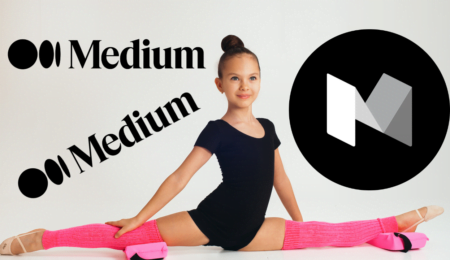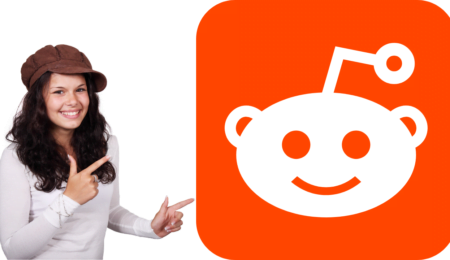The rapid development of technology has changed how the world works. User behavior and media consumption have taken a completely different path, thanks to different online advertising platforms and different advertising methods.
This change forced marketers to follow and adapt to changing marketing channels. Even advertising is not limited to traditional channels anymore
. It is now the era of online advertising.
Just like traditional advertising, online advertising comes in many shapes, sizes, and forms.
The basic principle behind digital advertising is the same as that of traditional advertising.
However, these advertisements have their own set of importance, types, advantages, disadvantages and even processes that differ from traditional advertisements.
What is digital advertising?
Online advertising is the act of drawing public attention to a particular offer over the Internet and paid digital channels by a specific sponsor.
Specifically, online advertising is any form of advertising that appears over the Internet or on digital channels such as websites, search engines, social media platforms, mobile apps, and other digitally accessible channels.
Online advertising is a branch of digital marketing and deals only with the promotional mix, not with other elements of the digital marketing mix.
Advantages and disadvantages of online advertising
There are more than four billion internet users around the world. This gives a huge boost to online advertising.
People search for products using search engines, follow their favorite brands in social media, and sign up for their campaigns via email and push notifications.
Advertising opportunities are huge, but using them correctly is not so easy. So, let’s take a closer look at the advantages and disadvantages of online advertising.
Advantages of online advertising
1.Easy global coverage.
Nowadays, people are used to searching for information about products and services via search engines like Google, Bing, and others.
Online advertising is a way to get your offerings in front of more than 4.3 billion web users around the world. You can easily target the whole world online.
2. Prices suitable for any budget.
The minimum cost of reaching an audience of 2,000 people is three times cheaper than traditional advertising methods, so any business from a small family business to a huge enterprise can use online advertising and get the most out of their finances.
3. Attract traffic to your site.
The more visitors to your site, the more potential customers you will have, which will lead to more sales. Online advertising aims to grab the attention of users and send them to your site.
Offers in digital ads should spark curiosity and give people a good reason to click on your site.
4. Online advertising allows targeting.
Unlike traditional marketing media that advertises to everyone without filtering, online advertising tailors the message to a specifically targeted audience – the people who are most likely to convert into customers.
For example, a travel equipment company might use social media ads to advertise to users who are interested in travel and encourage likes and shares.
5. The possibility of re-targeting.
Online ads are a way of saying, “Hey, looks like you checked out this toaster a couple of days ago. I have a great one for you right here! .”
If many potential customers visit your online home appliance store without purchasing anything, remind them of your brand through banner ads displayed on the websites they browse.
6. It allows you to create different touch points with your audience.
Online advertising helps you appear in the right place at the right time to connect with your audience.
If you own a small bakery, use social media like Instagram and Pinterest to showcase the products.
To share the news and build long-term relationships with your audience, boost them through email marketing. By mixing different types of digital advertising wisely, you can show that your company is always there and ready to be of service.
7. Online advertising is measurable.
Unlike offline marketing, where cost and effectiveness are more or less approximate, you can accurately track the return on your efforts and the efficiency of your online marketing using web analytics platforms such as Google Analytics.
Disadvantages of online advertising
The main challenges associated with online advertising include fierce competition, cost of errors, complex analytics, and ad blindness. Let’s take a closer look.
1. High competition.
Of course, it depends on your prestige, but if you do not invent something new, you will have to compete for the attention of customers.
This market is overly saturated, especially for e-commerce companies, so you need to put your customers’ needs first and improve your product regularly to make it competitive.
2. Mistakes are expensive.
Targeting the wrong people, choosing highly competitive keywords, and leaving your ad campaign on after you turn it off are some of the most common mistakes that can cost you a fortune.
To eliminate such errors, you need either a highly qualified specialist or a lot of experience. Both options require investments.
3. Complex analytics.
To analyze the performance of your ads, you need a third-party platform like Google Analytics and some experience to interpret the results correctly. Medium companies and large brands have analysts to make ads more targeted and effective.
4. Advertising blindness.
This term is associated with logos blindness. Users see ads almost every time they open a webpage.
For this reason, they simply ignore the signs without noticing them. To combat this, make sure your banners are targeted at the right people who need your offer.
Types and methods of online advertising
The Internet offers huge opportunities to connect with potential customers, so let’s review some of the most impactful types of online advertising on the market.
1. Search engine marketing
The search bar is the starting point for your users’ buyer journey. When entering a keyword, people focus primarily on the first page results.
Search engine marketing is about placing your web pages at the top of the search engine results page (SERP), whether in an organic or paid way.
Google AdWords displays paid results based on the Ad Rank auction. Companies set their price for a particular keyword, while Google analyzes the quality and relevance of the content.
2. Email advertisements
This is a marketing approach based on email communication.
This type of online advertising is one of the oldest players in the field and the most adaptable because email marketers are always on the lookout for innovations like the recently launched interactive emails.
You can customize, segment, and A/B test email campaigns to better target your audience.
Email marketing is the least intrusive platform for advertising because subscribers willingly choose to receive newsletters and promotions via email.
In addition, they can opt out at any time. The main idea of email marketing is to drive warm marketing leads to the website, and combine promotions with valuable non-sales content.
3. Social media ads
This means advertising on social media like Facebook, Instagram, Twitter, and Pinterest for B2C, and LinkedIn for B2B.
Companies tailor their news and promotions to their target audience via social media in two ways:
organically. If you produce kitchenware, you can post valuable content like hacks, interesting ways to use your products, or some recipes to encourage shares and build an attractive brand image.
paid. In this case, you can use social media functionality for business by displaying promotional posts that target your audience based on age, gender, preferred activities, and other things they have in common.
4. Visual and text ads
Display advertising is a type of digital media advertising where graphics like images and videos are used to promote a product on various digital platforms such as websites, social media platforms, etc.
This is especially useful when using it on websites like YouTube since it is a video based website already. If you’re using Google for your ad campaign, you can also display ad videos on YouTube before a user plays a video.
Video marketing is becoming increasingly popular, with research showing that video marketers have contributed to a 54% increase in brand awareness. According to HubSpot, video is the #1 strategy content marketers use over others.
5. Original ads
Native ads are subliminal ads that blend with the content they have been added to.
Sponsored listings within or after blog posts are an example of native ads.
These ads lead to better user interaction when compared to other forms of digital advertising due to their characteristics matching the structure and functionality of the platform on which they appear.
6. Video ads
Video ads are digital ads used to promote a show using video clips or animations played before, during, or after streaming content, or as standalone banner or native ads.
Mostly used on streaming video platforms like YouTube, Facebook Watch, etc. Video ads are also used on websites and blogs as out-of-stream ads to get the attention of website users.
7. Mobile advertising
This type of advertisement appears on smartphones and tablets. Companies can advertise via SMS after user login or display ads in the mobile-optimized browser.
If you run a shoe store, mobile ads are especially useful for advertising to a local audience with time-sensitive offers. You can create SMS campaigns in a short time and get a very high open rate.
8. Remarketing or remarketing ads
Remarketing ads are digital ads that target a brand’s online visitors with the motivation to drive them back to the website or app, or perform an action.
For example, a brand targets a visitor to its e-commerce store through ads to make them complete their unfinished transaction.
Another example could be an event brand that targets visitors to its website with informative ads about new events that they can attend.
9. Advertisements of the influencer, rater and reviewer
Influencer ads and curator ads are relatively new ad formats where the brand connects directly with content developers and/or curators with a good following to brand or display in their content.
This helps the brand gain popularity and trust of the influencer’s followers.
Tips for starting online advertising
Analyze your return on investment.
It’s easy to make sure your efforts are worth some time with internet marketing.
Check all possible metrics depending on the type of digital marketing you’re using. Analyze your email marketing open rate and CTR, use Google Analytics for your social marketing efforts, and search engine marketing.
Segment your audience.
Separate your audience into different groups that have something in common like age, gender, and location, and find the right approach for all of them. If you create a clothing display campaign, make sure the message for women is different from the one for men.
Choose the best media for a particular job.
If you make and sell vegan food, use social media to promote and take orders. Appearing in local directories in Google search results may also lead potential customers to you when they search Google “vegetarian food near me” for example.
Use popular social media platforms.
If your audience consists mainly of young people between the ages of 14 and 30, Instagram is probably the most popular place for them to communicate with each other.
Facebook is preferred for adults, so the best practice here is to examine your audience, their habits, and their global inclinations to make the right choice.
Get creative with your ads.
Online ads are meant to grab people’s attention, so make your ads expressive and relevant. Boost your creativity with bright colors and huge titles, but avoid using all caps.
Use a clear call to action.
There is little time to get your message across to the audience, so be clear about what you want. Use a short, unambiguous call-to-action such as “Book now,” “Learn more,” “Get a promo code,” etc., depending on the business and advertising objective.
Create mobile ads.
Preview all the ads you produce on mobile to make sure they work because 58% of site visits are from smartphones.
The future of online advertising: What to prepare for in 2023
While online advertising offers a proven method for building brand awareness, generating website traffic, and driving sales, there are several challenges that businesses need to consider.
Understanding these emerging trends can help your business future-proof your strategy for 2023 and beyond.
Some factors to watch include:
- Ad blockers
Thanks to bad targeting and unwanted digital ads, many people are now using ad blockers.
Unfortunately, this consumer behavior makes it difficult for your company to reach your audience through digital advertising. However, you can use other strategies to connect with your target market.
Internet marketing methods such as search engine optimization (SEO), for example, can help your business reach users through organic search results.
You can also use content marketing, in concert with SEO, to develop content that your target market will want to read and share.
Even though some of your target audience uses ad blockers, you can overcome this challenge.
- Saturated markets
Total global spending on digital media advertising exceeds $200 billion.
This kind of spending can lead to crowded advertising platforms, especially social media. As an online advertiser in 2023, you can expect more competition.
But that doesn’t mean you should ignore online advertising.
Creating a competitive and smart digital advertising strategy can help your business get the most out of this medium.
If you make better, more user-centric ads than your competitors, you can earn more clicks, conversions, and sales.
- User privacy
User privacy is a growing concern, as evidenced by the General Data Protection Regulation (GDPR) in the European Union (EU). Whether your company operates inside or outside the European Union, you need to consider this digital advertising challenge.
While seven out of ten consumers want personalized ads, you need moderation.
Use what you know about your users to create ads that are highly targeted, but not scary ads.
For example, you can limit ads to a specific region, demographic, or interests in exchange for creating ad text that cites your audience’s exact location and demographics.
This approach makes your digital ad look personalized but not overly personalized to the user.
Common questions
What is online advertising?
Online advertising is a data-driven process in which a company posts promotional content about the products or services it sells on various online platforms.
Some of these platforms include search engines such as Google, social networking sites, and other websites.
An effective digital advertising campaign aims to target consumers at every stage of the buying process.
Therefore, the main objective is to increase awareness of the brand or product and encourage users to buy.
This, in turn, will improve the amount of revenue the company generates overall.
How do digital ads work?
Paid digital advertising is a marketing method in which companies pay a publisher (such as a search engine or website owner) every time someone clicks on or sees their ads in a search result, on a website, on social media, or on various digital platforms.
What is considered a digital advertisement?
Online advertising refers to all types of communications that a company makes to advertise and promote its brand, product or service using various digital platforms and channels. In this way, everything done with digital platforms and resources can be considered as digital advertising.
Can digital marketing make you rich?
Digital marketing can make you rich if you are in line with the changing face of the digital market. Traditional marketing such as blogging, content marketing, SEO, social media marketing, mobile marketing, and email are still solid ways to make money online.






Leave feedback about this